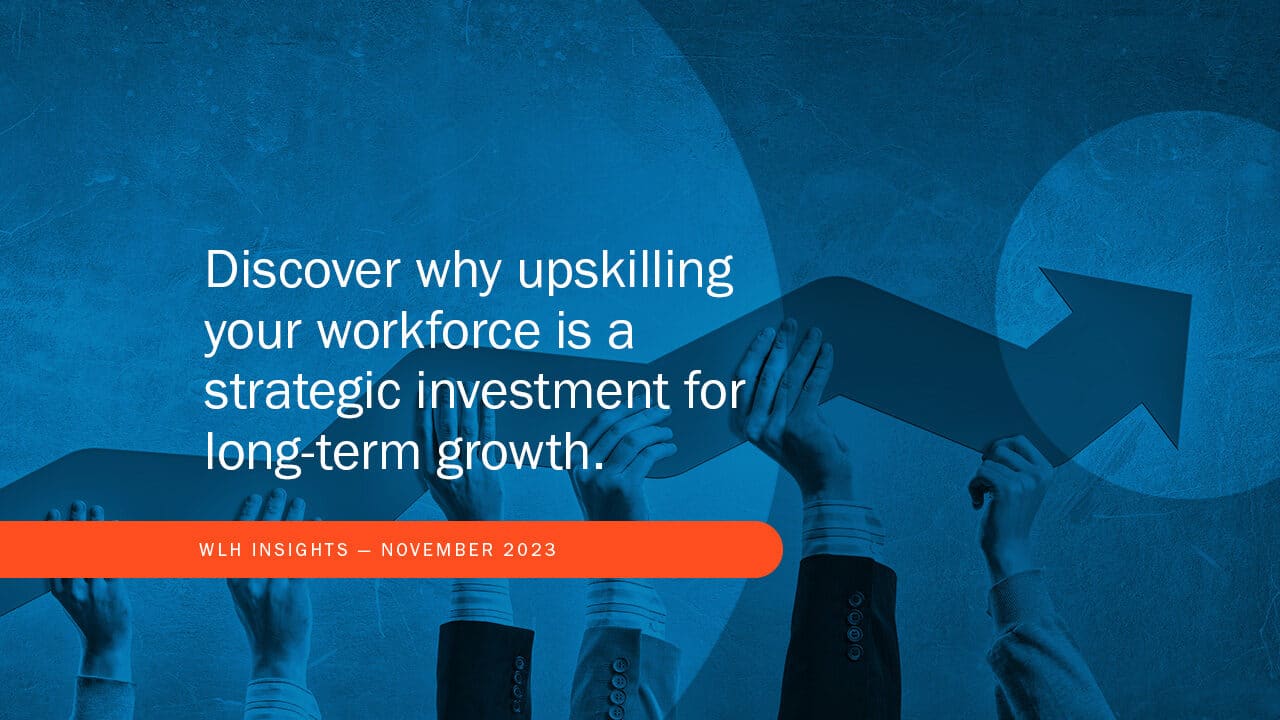What Does Upskilling Really Mean?
Upskilling isn’t just a buzzword. It involves identifying skill gaps, harnessing existing talents, and fostering new proficiencies. Unlike the radical shift that reskilling demands, upskilling fine-tunes competencies, and helps amplify the value of your workforce without a complete overhaul.
Upskilling doesn’t dismiss existing skills; it enhances them, and focuses on readiness, not deficiency.

The Strategic Benefits of Upskilling
While the investment in upskilling demands time and resources, the return on investment is huge. When employers invest in their staff’s learning, development, and growth, that investment fosters a sense of value among employees and significantly reduces the likelihood of them seeking new employment opportunities.
Current research to support the strategic benefits of upskilling is as follows:
- A key factor that prompts employees to consider leaving their jobs is feeling undervalued by their organizations and managers.
- 48% of U.S. workers express their willingness to switch jobs if presented with opportunities for skills training.
- 65% of employees view employer-provided upskilling as highly important when they assess potential new job prospects.
Implementing a Successful Upskilling Program
Designing and executing an effective upskilling program demands planning and strategic execution. Here are four key recommendations to consider:
- Secure Leadership Buy-In and Participation: When leaders actively engage in upskilling, it signals to employees that growth is a top organizational priority. Leaders can also share their own upskilling experiences, inspiring the workforce.
- Align Upskilling Efforts with Business Goals: Embedding learning outcomes in your business objectives, you ensure that upskilling isn’t a stand-alone endeavor but a catalyst for driving the organization forward.
- Design Flexible Learning Paths: Create flexible learning paths that can accommodate individual employee skills, career aspirations, and role requirements.
- Embrace Blended Learning Solutions: Leverage the power of blended learning, combining traditional classroom settings with online courses, workshops, hands-on experiences, mentorship and peer learning.
Evaluate remaining resources in this year’s budget and allocate to opportunities with the highest potential:
- What resources and approaches have been most successful?
- What lessons learned can be applied to similar cases?
- Are there opportunities to ask for additional resources?
- Are there portfolio related trade-offs that must be considered when re-allocating resources?
The Success of An Upskilling Initiative Is Measured in Behavior Change
Imagine you’re equipping your team with the latest industry insights and cutting-edge skills. You’re providing them with top-notch training, and they’re absorbing knowledge like sponges. But what happens next? For your upskilling initiative to be truly effective, the newly acquired knowledge must translate into meaningful changes in how your employees operate day-to-day.
Sustainable behavior change is at the heart of a successful upskilling initiative. Here are four tips to drive behavior change:
- Align Skills with Goals: Ensure the focus of your upskilling initiative aligns with your business strategy.
- Plan for Sustainability: Think through what happens after your initiative. What ongoing support, resources, and message reinforcement will you put in place?
- Measure Success: Depending on the upskilling focus, there may be key performance indicators (KPIs) that are directly tied to the skills and behaviors you aim to cultivate. Determine and plan for monitoring in advance.
- Look for the Ripple Effect: When there is genuine behavior change, it sets off a powerful ripple effect throughout your organization. Determine where you can look to see if key behaviors are coming to life in day-to-day work.
How Business Leaders Can Champion An “Upskilling” Initiative
In an industry characterized by continuous change, upskilling isn’t just a buzz word — it’s a requirement. The essence of upskilling lies in recognizing that the process of developing your people is as valuable as the result of them being developed, and the pursuit of knowledge is a career long commitment. Beyond the tactical advantages, upskilling symbolizes a profound investment in the future viability of your organization.
So how do you get started?
The journey towards upskilling begins with introspection. Assess your team’s strengths, identify the skill gaps, and envision the collective potential. If turning that vision into action seems daunting, we’re here to help.
Let Us Help You Translate Your Upskilling Vision into Action
Our experts are ready to help you translate your vision into observable behavior change. Schedule a call to explore how we can assist your organization in creating a culture of sustainable growth through upskilling.
